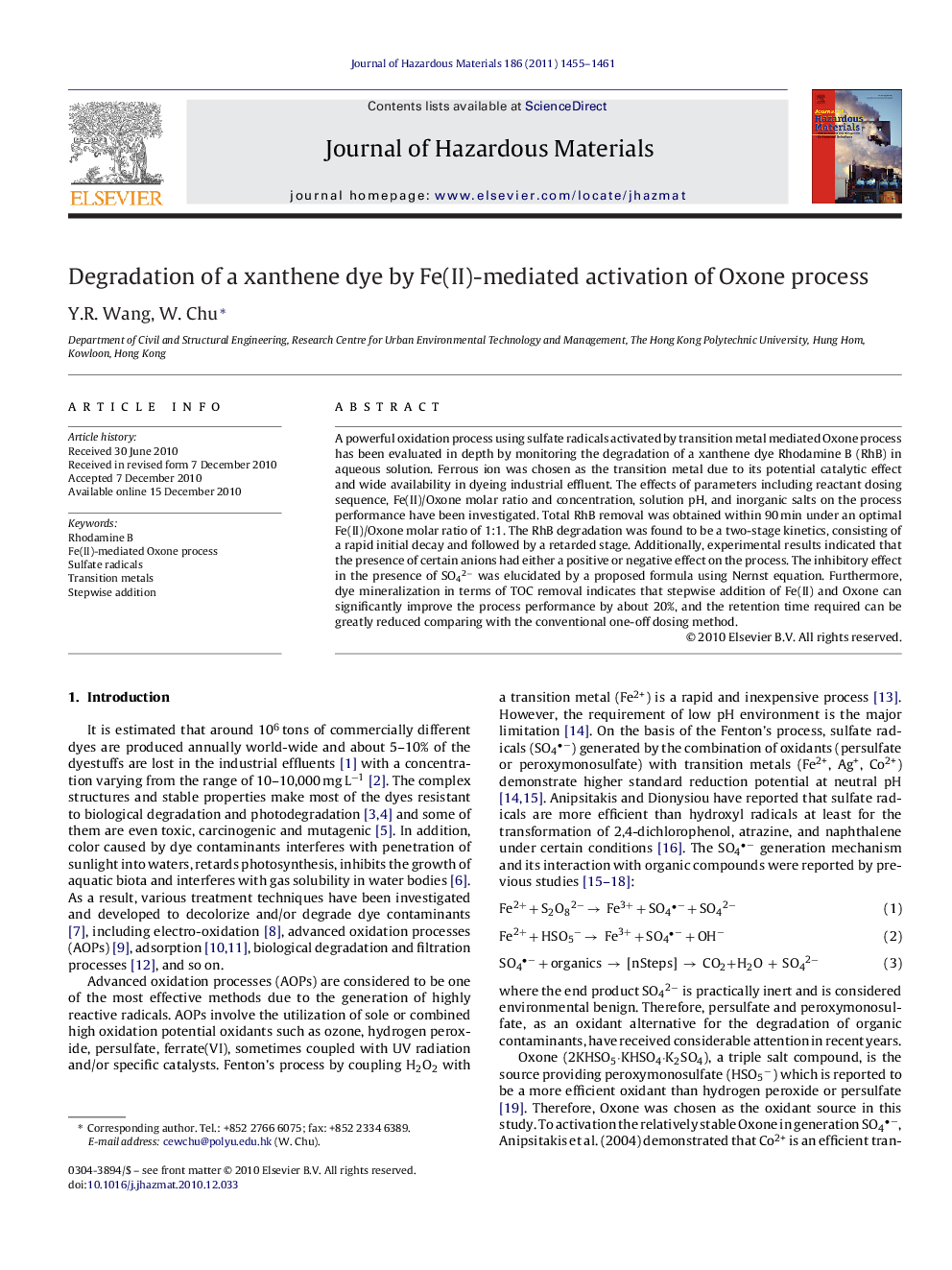| Article ID | Journal | Published Year | Pages | File Type |
|---|---|---|---|---|
| 6972697 | Journal of Hazardous Materials | 2011 | 7 Pages |
Abstract
A powerful oxidation process using sulfate radicals activated by transition metal mediated Oxone process has been evaluated in depth by monitoring the degradation of a xanthene dye Rhodamine B (RhB) in aqueous solution. Ferrous ion was chosen as the transition metal due to its potential catalytic effect and wide availability in dyeing industrial effluent. The effects of parameters including reactant dosing sequence, Fe(II)/Oxone molar ratio and concentration, solution pH, and inorganic salts on the process performance have been investigated. Total RhB removal was obtained within 90Â min under an optimal Fe(II)/Oxone molar ratio of 1:1. The RhB degradation was found to be a two-stage kinetics, consisting of a rapid initial decay and followed by a retarded stage. Additionally, experimental results indicated that the presence of certain anions had either a positive or negative effect on the process. The inhibitory effect in the presence of SO42â was elucidated by a proposed formula using Nernst equation. Furthermore, dye mineralization in terms of TOC removal indicates that stepwise addition of Fe(II) and Oxone can significantly improve the process performance by about 20%, and the retention time required can be greatly reduced comparing with the conventional one-off dosing method.
Related Topics
Physical Sciences and Engineering
Chemical Engineering
Chemical Health and Safety
Authors
Y.R. Wang, W. Chu,
